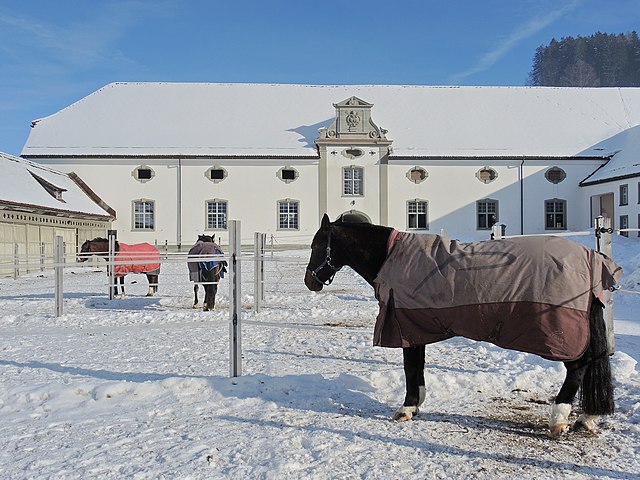A stud farm or stud in animal husbandry is an establishment for selective breeding of livestock. The word "stud" comes from the Old English stod meaning "herd of horses, place where horses are kept for breeding". Historically, documentation of the breedings that occur on a stud farm leads to the development of a stud book. Male animals made available for breeding to outside female animals are said to be "standing at stud", or at "stud service", referencing the relatively high probability that they are kept at a stud farm.
A Thoroughbred horse stud farm, Murrurundi, New South Wales
Einsiedeln Mews with Cavalli della Madonna horses.
The Međimurje horse stud farm, Žabnik at Sveti Martin na Muri, in Croatia, is owned by the Međimurje nature public institution
A large stud farm in Gdynia, Poland
The Andalusian, also known as the Pure Spanish Horse or PRE, is a horse breed from the Iberian Peninsula, where its ancestors have lived for thousands of years. The Andalusian has been recognized as a distinct breed since the 15th century, and its conformation has changed very little over the centuries. Throughout its history, it has been known for its prowess as a war horse, and was prized by the nobility. The breed was used as a tool of diplomacy by the Spanish government, and kings across Europe rode and owned Spanish horses. During the 19th century, warfare, disease and crossbreeding reduced herd numbers dramatically, and despite some recovery in the late 19th century, the trend continued into the early 20th century. Exports of Andalusians from Spain were restricted until the 1960s, but the breed has since spread throughout the world, despite their low population. In 2010, there were more than 185,000 registered Andalusians worldwide.
Andalusian horse
A "cobra" of Andalusians, that is, a group of mares shown by a single handler
A 1743 engraving of a "Spanish horse"
An Andalusian performing dressage at the 2007 World Cup Finals








